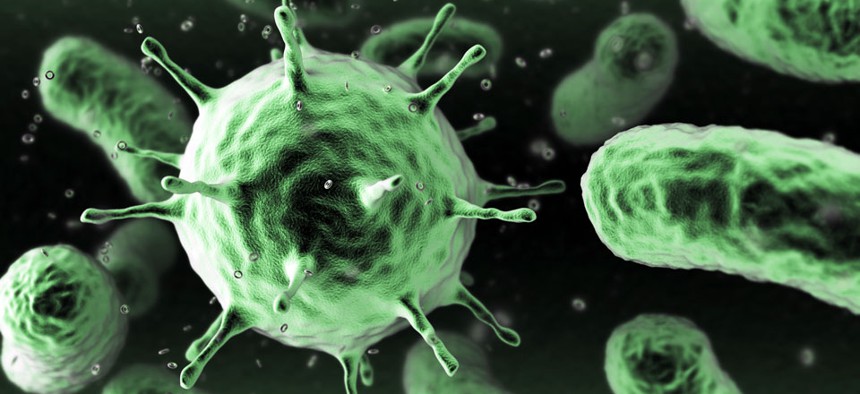The Solar Panels of the Future Could Be Grown From Bacteria

Chromatika Multimedia snc/Shutterstock.com
Germs are making synthetic materials smarter.
One day we could have conductive materials that grow, evolve, and self-repair. Researchers at MIT have taken the first steps to creating them. A new study(paywall) describes “living materials” that combine bacterial cells with nonliving materials that can conduct electricity and emit different colors of light. The study is just a proof-of-concept, but researchers say that future applications could include cheaper, more efficient solar panels and biosensors.
“When you look around the natural world,” lead author Timothy Lu told Quartz, “you can see that biology has done a great job of designing unique materials. But in our day-to-day lives, we use materials that aren’t alive in any way.” These plastics, he says, require lots of energy to make and use. “The goal,” he says, “is to find a way to engineer living cells so you can make them into materials you might not find naturally.”
His team used E. coli, which naturally produces biofilms—communities of bacteria like the plaque on your teeth—that grow to cover a surface. Bacteria in biofilms have unique ways of organizing and communicating with each other to survive, which is a quality the researchers found attractive for producing new materials. Lu and his team programmed the E. coli to grow particular proteins on their surface. Each type of protein fiber prefers to interact with a different nonliving molecule.
Lu’s team first demonstrated the process with gold nanoparticles. When they were introduced into a biofilm with the right kind of protein fibers, the bacteria would grab onto the fibers and create working circuits. But his team thinks that lots of nonliving molecules—other types of metals and even organic conductors of electricity like graphene, for example—could be integrated using the same methods. And the biofilms could build their own nonliving materials too. “Think of how bone works: you eat certain minerals, and they get formed into a structure in the body,” Lu says. “We could give the bacteria the precursors, and let them build the materials themselves.” And then, he says, they could evolve: By giving the biofilms a library of different materials to work from, generations of selection for desirable properties could lead the biofilms to arrive at the best configuration of proteins and nonliving molecules to accomplish a particular task.
An adhesive would be an obvious first application, Lu says. “We can imagine having glues that are alive,” he says, “where the glue could sense if its seal broke and self-repair. That’s a longterm goal, of course.” The combination of living and nonliving cells would also lend itself to biosensors—living cells could react to toxins in the environment, and conductive particles could then transmit the results—and even solar panels. “We’re using E. coli now, but there’s no reason why we couldn’t use photosynthetic cells in the future,” Lu says. “And then, you could just stick it in the sun and grow all the material you want!”
Reprinted with permission from Quartz. The original story can be found here.
(Image via Chromatika Multimedia snc/Shutterstock.com)





